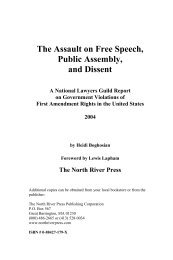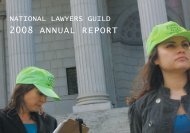Does your library have National Lawyers Guild Review?
Does your library have National Lawyers Guild Review?
Does your library have National Lawyers Guild Review?
You also want an ePaper? Increase the reach of your titles
YUMPU automatically turns print PDFs into web optimized ePapers that Google loves.
116 national lawyers guild reviewseveral decades, from 7,733 elections in 1970 to 1510⎯less than one fifthas many⎯in 2007.The recess appointments of two new Board members promise changesin a number of recent Board decisions, particularly those in which the lastBoard raised new obstacles to organizing. 8 But even a wholesale reversalof all of the unfavorable decisions of the last decade would not address thefundamental problems that are making the Board and the Act irrelevant.So where do we go from here? There <strong>have</strong> been any number of proposalsfrom labor and its allies for revitalizing labor law over the past severaldecades; this note offers a short survey of those that propose to change therules governing organizing, from the mechanics of choosing a representativeto the ways that the law is enforced.A. More vigorous enforcement of the ActThe labor law reform package that Senator Hatch and others filibusteredin 1978 would <strong>have</strong> forced the NLRB to take an employer’s unlawful dischargeof employees during a union organizing drive as seriously as a union’ssecondary boycott activity, while awarding double backpay to unlawfullyfired employees. While that effort died more than thirty years ago, the Boardstill has the power to seek the extraordinary remedies—and, in particular,Section 10(j) injunctions—that Congress has already given it. 9The limitations of this strategy are obvious: while a court order requiringan employer to reinstate unlawfully fired employees goes a long way towardrestoring the status quo, it does not fully erase the message that the originalunlawful termination conveyed. 10 Similarly, a Gissel order compelling theemployer to bargain with the union, brings with it its own problems: it turnsemployees’ right to union representation into a claim, subject to being forfeitedif that claim ends up in front of a hostile court. 11B. The Employee Free Choice ActCard checks are nothing new—the UAW’s first collective bargainingagreement with General Motors, which gave it the right to represent itsmembers in the grievance procedure, enabled the union to obtain recognitionthroughout GM’s assembly plants by proving that it represented a majority ofworkers. Other unions, such as the United Food and Commercial Workers,<strong>have</strong> used card checks for the last thirty years to bring new stores under thecoverage of a multi-store contract. 12More recently, however, unions <strong>have</strong> negotiated card check agreementswith employers as an alternative to conventional NLRB election campaigns.Unions not only win roughly 75 percent of all card check campaigns, 13 but


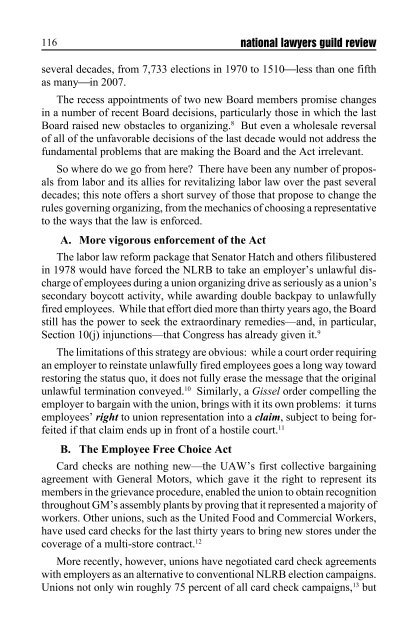
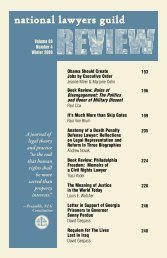
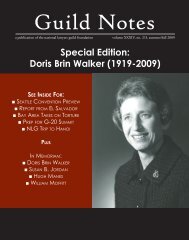
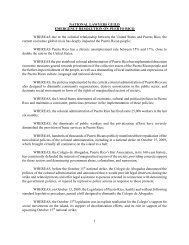
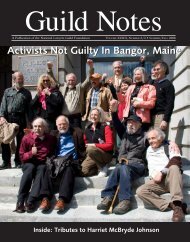
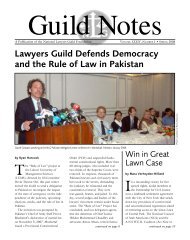
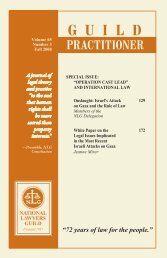

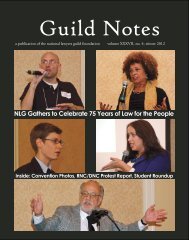

![NLGRev 68-2[1].indd - National Lawyers Guild](https://img.yumpu.com/30820772/1/167x260/nlgrev-68-21indd-national-lawyers-guild.jpg?quality=85)
